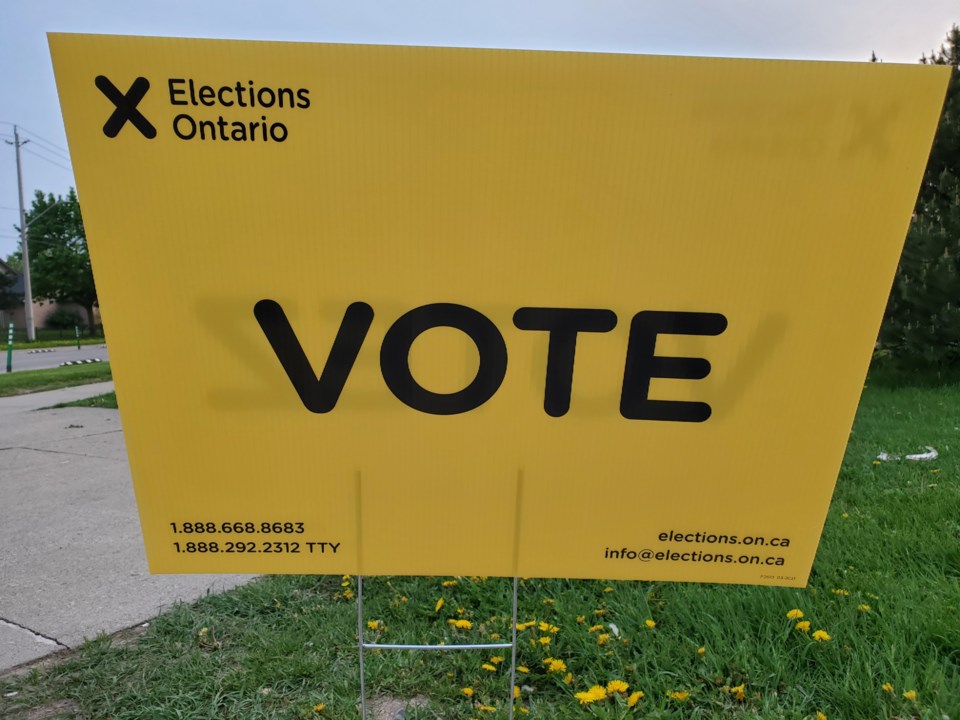With fewer than half the eligible voters in Ontario casting their ballots Thursday, the provincial election results both locally and provincially were decided by a historically low number of voters.
Elections Ontario has reported about a 43 per cent voter turnout rate, which means about 4.7 million of the 10.7 million eligible voters in the province cast ballots.
This is the lowest voter turnout rate in the history of Ontario. The closest dip happened in the 2011 election, when 48 per cent of voters cast ballots in the provincial election. Excluding 2011, the voter turnout rate for provincial elections since 1980 has been between 51 and 64 per cent.
In 2018, the voter turnout rate for Ontario was 57 per cent of the 10.2 million eligible voters. The 14 per cent drop in voter turnout rate between the 2018 and 2022 elections is the second-largest decrease in provincial history.
It’s hit as high as 86 per cent for the 1919 election (1.4 million eligible voters), after which it dropped to 58 per cent for the 1923 election.
In York-Simcoe, the voter turnout rate was 38.9 per cent, with 94,232 votes cast. Progressive Conservative incumbent Caroline Mulroney won the riding for a second term, with 20,789 votes.
In Simcoe-Grey, the voter turnout rate was about even with the province. There were 121,996 eligible voters and 43.3 per cent cast ballots (about 52,800 people).
The results of the local vote put PC candidate Brian Saunderson on top with 27,060 votes, followed by Liberal candidate Ted Crysler with 11,680 votes and NDP candidate Kieth Nunn with 5,838 votes.
In the 2018 provincial election, Simcoe-Grey’s voter turnout rate was 57 per cent of 108,156 eligible voters, and in the 2014 election, 52 per cent of the riding’s eligible voters cast ballots.
Dating back to 1987, the Simcoe-Grey riding (formerly Simcoe-West) has seen voter turnout rates in the 60s, with a dip to 48 per cent in 2011.
The Bruce-Grey-Owen Sound riding saw a slightly higher turnout than the overall provincial rate with 46 per cent of 89,698 eligible voters casting ballots Thursday.
PC candidate Rick Byers won in Bruce-Grey-Owen Sound with 20,261 votes, followed by Liberal candidate Selwyn Hicks with 8,447 votes and NDP candidate Karen Gventer with 5,798 votes.
In the 2018 election, the Bruce-Grey-Owen Sound riding voter turnout was about 58 per cent, which was up slightly from a 54 per cent turnout for the 2014 election.
Elsewhere in Simcoe County, incumbent MPP Doug Downey (PC) won a tight race in Barrie-Springwater-Oro-Medonte with 609 votes more than Liberal candidate and Barrie mayor (on leave) Jeff Lehman. The two received 16,114 and 15,505 votes, respectively.
Voter turnout in Barrie-Springwater-Oro-Medonte was 44.6 per cent of 85,091 eligible voters, which is down from a 57 per cent turnout in 2018.
In Barrie-Innisfil, PC incumbent Andrea Khanjin won with 18,225 votes, followed by the NDP’s Pekka Reinio with 6,942 votes and Liberal John Olthuis with 6,564 votes. Voter turnout in the riding was 39 per cent of 92,387 eligible voters.
For the 2018 election, the Barrie-Innisfil voter turnout rate was 54 per cent.
In Simcoe North, PC incumbent Jill Dunlop won the riding with 23,041 votes, a margin of 14,833 more votes than NDP candidate Elizabeth Van Houtte, who received 8,208 votes, followed by Liberal Aaron Cayden Hiltz, who received 8,070 votes.
Simcoe North’s voter turnout rate was nearly 46 per cent, which is down from almost 59 per cent in the 2018 election.



